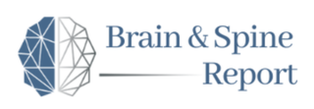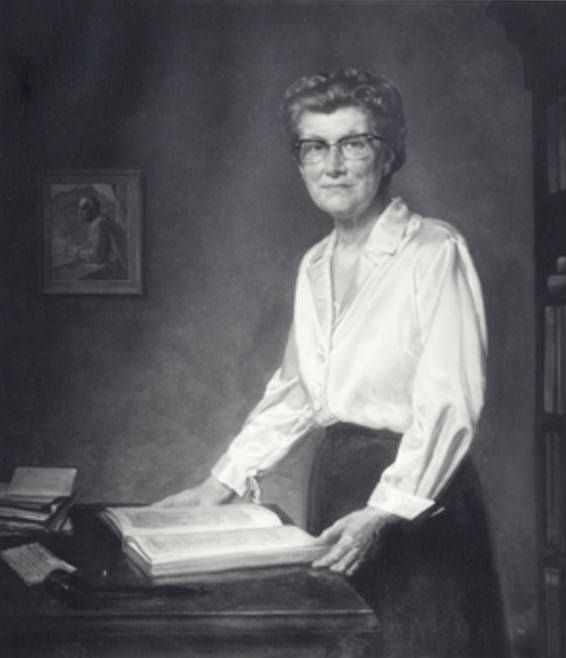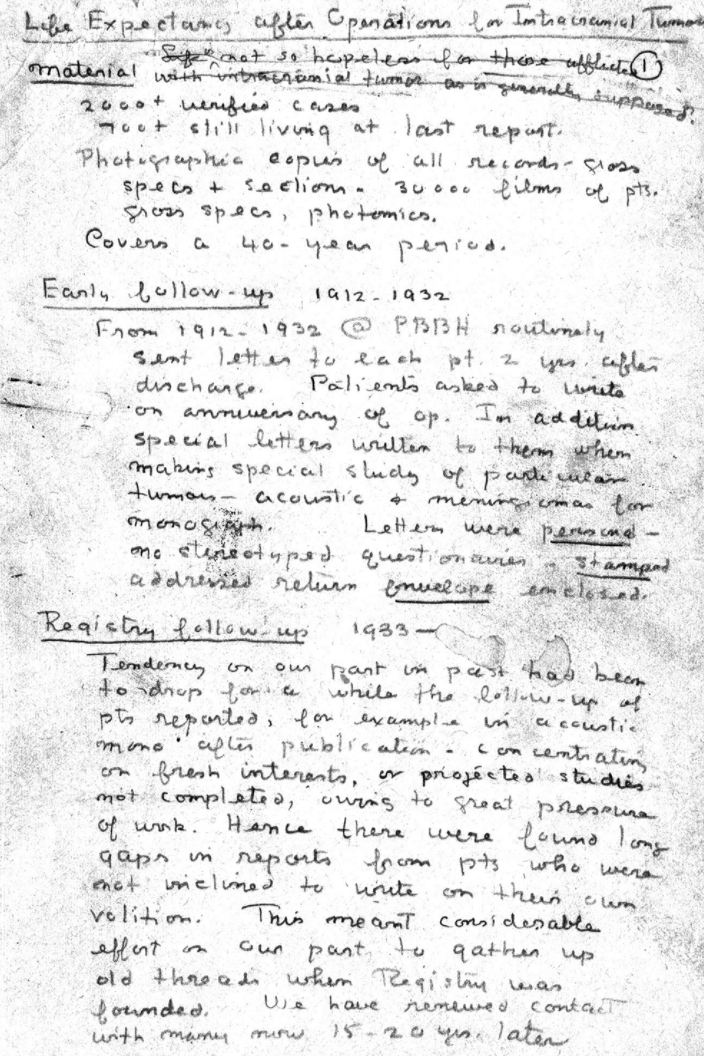Dr. Louise Eisenhardt - A Retrospective Review of Women EmpowermentAuthor(s): Gretchen M. Koller, BS
Date Published: 31 October 2021 “Life is not so hopeless for those afflicted with intracranial tumors as is generally supposed.” - Dr. Louise Eisenhardt Dr. Louise Eisenhardt is recognized as a pioneer neuropathologist who not only shaped the world of neuropathology but also, just as importantly, helped pave the way for women in medicine. While her meticulousness and dedication to patients earned her the respect of her colleagues and, today, the title of a neurosurgical historical pillar, it was Dr. Eisenhardt’s determination, devotion to excellence, and leadership involvement that opened the gates for female presence within the field of neurosurgery and set the stage for the continuation of future women leaders. Born to Albert and Ella Knoll Eisenhardt of Ramsey, New Jersey in 1891, little is known of Dr. Eisenhardt’s early life. Thus, her journey to becoming a renowned neuropathologist was set in motion as she began working as an editorial assistant to Dr. Harvey Cushing in 1915. She was tasked with editing his book, Tumors of the Nervous Acusticus, when Dr. Cushing left for military duty in France during World War I. Once completed, she decided to attend medical school. While enrolled at Tufts University School of Medicine, she continued to do editorial work for Cushing and, in 1922, began keeping a cumulative and meticulous log of Cushing’s operative results on various types of intracranial tumors. She graduated from Tufts in 1925 and later went on to intern at the New England Hospital for Women and Children. Throughout her training, she continued to record every tumor treated by Dr. Cushing. After her internship, Dr. Eisenhardt rejoined Dr. Cushing as a neuropathologist and junior associate in surgery. She remained by his side in Boston operating rooms making on-the-spot diagnoses of tumors and tissues as he removed them. During this time, she continued their case log, co-authored papers with Cushing, and taught neuropathology at Tufts. In 1934, they both moved from Harvard University to Yale where they established the Brain Tumor Registry, starting with 2,000 intracranial tumor specimens and 50,000 pages of case records. After the death of Dr. Cushing in 1938, Dr. Eisenhardt became curator of the registry and continued to follow thousands of brain and spinal tumor patients. For years, she was considered the world expert on brain tumor diagnosis and neurosurgeons from all over the world would send her slides of difficult tumors in search of diagnostic and treatment advice. Young neurosurgeons and neuropathologists would also come to the collection to study the pathology of intracranial tumors. The Harvey Cushing Society (now the American Association of Neurological Surgeons) was established in 1931, in which Dr. Eisenhardt was an inaugural Charter member. She served as the Society’s Secretary-Treasurer and Historian and later became the first female President in 1938. When the Cushing Society established the Journal of Neurosurgery in 1943, Dr. Eisenhardt was named an editor and held that position until her professional retirement 22 years later. Under her editorship, the journal became known as one of the world's most outstanding scientific publications. With her health beginning to decline, Dr. Louise Eisenhardt passed away two years later in the comfort of her sister’s home. While the number of females within neurosurgery is gradually increasing, the field still remains primarily dominated by males today. Although Dr. Eisenhardt did not operate herself, her presence within the realm of neurosurgery since its inception is empowering. After taking the time to understand and appreciate the roles she played and the seats she held, it is almost impossible not to feel a sense of pride and admiration. As a female medical student who has only begun to scratch the surface, Dr. Eisenhardt’s career and success serve as a catalyst of inspiration, a standard to meet, and, at a minimum, a reminder that us women belong here, too. As a scholar, investigator, editor, and teacher, Dr. Eisenhardt achieved many “firsts” for women in medicine and will forever be remembered for the high standards she set for colleagues, students, and aspiring medical authors. The original collection of slides and operative notes of Drs. Cushing and Eisenhardt were donated to the Yale Department of Neurosurgery in 1997. Figure 1: Portrait of Dr. Louise Eisenhardt by Deane Keller currently on display at the Yale School of Medicine. (https://medicine.yale.edu/profile/115694/) Figure 2: Page 1 of Dr. Eisenhardt’s notes titled “Life expectancies after operations for intracranial tumors.” (Dr. Louise Eisenhardt’s personal notes: how she and Dr. Cushing collected data and followed patients, Journal of Neurosurgery) References Changing the Face of Medicine | LouiseEisenhardt (nih.gov) German, W. J. (1967). Dr. Louise Eisenhardt, Journal of Neurosurgery, 26(3), 285-288. Hundley, K. N., Pait, T. G., Rodriguez, A., & Day, J. D. (2021). Dr. Louise Eisenhardt’s personal notes: how she and Dr. Cushing collected data and followed patients, Journal of Neurosurgery. DOI: 10.3171/2021.4.JNS201086. Louise Eisenhardt < Yale School of Medicine Louise Eisenhardt, MD | Women In Neurosurgery (WINS) (neurosurgerywins.org) Author Affiliation(s) College of Osteopathic Medicine Kansas City University Kansas City, Missouri, United States Medical Student Neurosurgery Training Center Brain and Spine Group, Inc. Pasadena, California, United States Editor(s) Michael W. Kortz, MBA Interim Editor-In-Chief Brain & Spine Report Medical Student Neurosurgery Training Center Comments are closed.
|
Categories
All
Archives
October 2023
|






10/31/2021